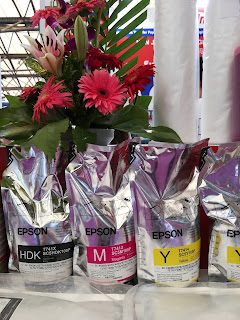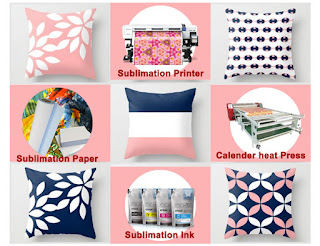Hi, nice to see you again, my dear friends. A week will over again. During
the sublimation transfer printing, I believe that you must know
dye sublimation ink. Then did you know materials are used in the sublimation ink. Now, let me
talk about this topic.
In the specific use of sublimated ink need to see what is the materials it?
Many people still want to see the basic market evaluation, that is, when we
approve of it, we can know whether it is reasonable, and can rest assured to
choose, after all, this kind of water in the use of the process. There are many
advantages that can be achieved. They are widely used in many textile
industries. The raw materials made from the distribution of dyes are also better
in actual performance and function, so you can choose to use them safely.
Looking at the material of the body, it is now widely used to make some
cloth, leather metal and other wood materials more, which means that the value
of heat sublimation ink is more detailed to understand the use of the overall
advantages of the tablet and popularity will be higher, so, in the choice of
time must see whether the overall advantage of the value is not to play a role.
A good choice of ceramic, glass and plexiglass sublimation inks when the actual
effect or price comparison is that as long as we can understand in detail when
doing these benefits can be learned from the value, in the whole market can know
the role of ink is reasonable to choose.
The advantages of dye sublimation transfer ink
Compared with the traditional ink, Sublimation Ink has a fast drying speed,
good environmental protection, good overprinting effect and high brightness and
so on.
(1) Sublimation Ink curing speed; in the UV light irradiation, only a
fraction of a second to a few seconds to cure, improve the production
efficiency; due to curing instant dry, small dot expansion, ink penetration to
the paper In the less, strength, clarity and stability are significantly better
than ordinary ink; at the same time Sublimation Ink printing does not require
powder, so that the printing operation environment can be improved.
(2) sublimed ink due to solvent-free, after curing the thickness of the ink
layer and the same thickness of the printing ink, the weight per unit of
Sublimation Ink compared with traditional inks, printing color reproduction
ability stronger.
(3) As the sublimation of the chemical in the ink through the cross-linking
reaction to form a polymer three-dimensional network of polymer, the ink surface
has a strong chemical resistance and abrasion resistance in a variety of
printing materials (including gold and silver cardboard, Film, synthetic paper,
metal, plastic and other non-absorbent materials) on the fixed, strong
adhesion.
(4) Sublimation Ink only in the ultraviolet radiation will occur under the
cross-linking curing reaction, the printing machine will not dry, so when the
ink will not solidification, you can immediately "run and stop", can reduce the
printing preparation time ,Increase efficiency.
(5) Sublimation Ink, the monomer used for dilution can also be used as a
curing component to participate in the curing reaction; therefore, Sublimation
Ink can achieve almost 100% solid content, in the drying process without solvent
evaporation, reduce the environment Of pollution.
(6) Sublimation Ink curing drying is used in UV light source, which is almost
no heat effect of the cold light source, for those who are sensitive to
heat-sensitive substrates will not be affected, applicable to heat-sensitive
substrate printing, Not because of material deformation and other issues caused
by ink film off, wrinkling and so on.
Okay, if you want to learn more about
sublimation ink, you can contact us at any time online.
Nanjing Feiyue paper Industrial Co.,ltd
www.feiyuepaper.com
Email: sales@feiyuepaper.com
jenny@feiyuepaper.com
Whatsapp: +8618755150383

















